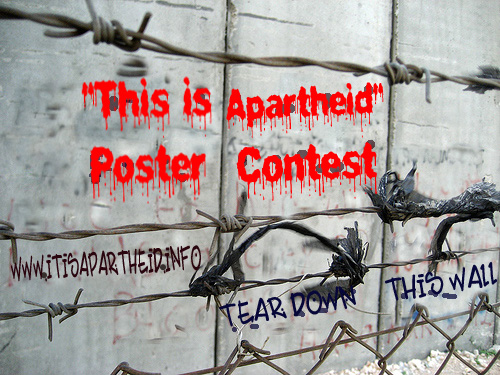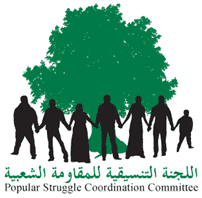Category: Press Releases
-
“This is Apartheid” poster contest
14 December 2011 | It is Apartheid HELP FIGHT INJUSTICE, HELP THE WORLD UNDERSTAND ISRAELI APARTHEID. WE ARE CALLING ON ACTIVISTS AND ARTISTS TO SUBMIT A POSTER TO THE “THIS IS APARHTEID POSTER CONTEST. Art has always been an important part of liberation struggles. It can inspire and convey concepts beyond words. www.itisapartheid.org and its…
-
Critically injured Mustafa Tamimi of Nabi Saleh dies of his wounds
9 December 2011 | Popular Struggle Coordination Committee Mustafa Tamimi, who was fatally injured yesterday during a demonstration in the West Bank village of Nabi Saleh passed away earlier today. Tamimi was hit in the face by a tear–gas projectile shot directly at him, from only a few feet away. Mustafa Tamimi, a 28 year…
-
Palestinian Freedom Riders to ride settler buses to Jerusalem
13 November 2011 | Freedom Riders Inspired by the Freedom Rides of the US Civil Rights Movement Palestinian activists will attempt to board segregated Israeli settler buses to occupied East Jerusalem Groups of Palestinian Freedom Riders will attempt to board segregated settler buses heading to Jerusalem through the occupied West Bank this Tuesday November 15,…



